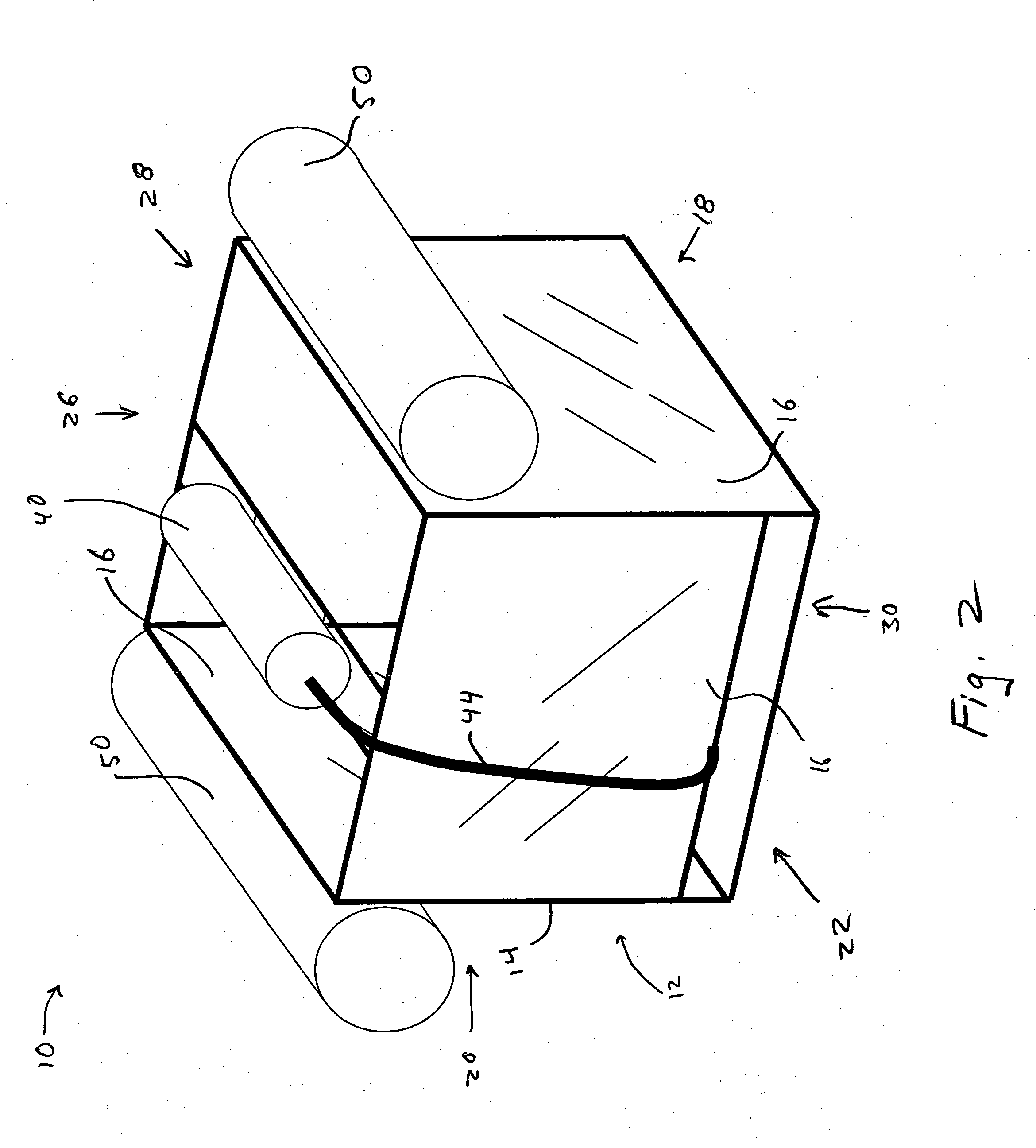Fine bubble airlift device
- Summary
- Abstract
- Description
- Claims
- Application Information
AI Technical Summary
Problems solved by technology
Method used
Image
Examples
Embodiment Construction
[0020]Referring now to the figures, wherein like reference numerals refer to like features, there is shown in FIG. 1 a device 10 according to an embodiment of the present invention. The device has a housing 12 including a frame 14. Frame 14 may be made of any material that is strong enough to support the weight of the remaining components of the device 10 and will not corrode or otherwise degrade in the presence of water, including salt water or water with waste materials of other chemicals dissolved therein. Preferably, support members are made from marine-grade aluminum or another similar metal. Support members are preferably assembled by welding or other known methods, including the use of screws, bolts, rivets or the like.
[0021]Frame 14 is structured to provide the desired shape for housing 12. The structure of frame 14 shown herein is in the shape of a rectangular prism, although other acceptable shapes for aeration devices, such as cylinders, are possible. The use of these des...
PUM
| Property | Measurement | Unit |
|---|---|---|
| Percent by mass | aaaaa | aaaaa |
| Percent by mass | aaaaa | aaaaa |
| Length | aaaaa | aaaaa |
Abstract
Description
Claims
Application Information
 Login to View More
Login to View More - R&D
- Intellectual Property
- Life Sciences
- Materials
- Tech Scout
- Unparalleled Data Quality
- Higher Quality Content
- 60% Fewer Hallucinations
Browse by: Latest US Patents, China's latest patents, Technical Efficacy Thesaurus, Application Domain, Technology Topic, Popular Technical Reports.
© 2025 PatSnap. All rights reserved.Legal|Privacy policy|Modern Slavery Act Transparency Statement|Sitemap|About US| Contact US: help@patsnap.com



